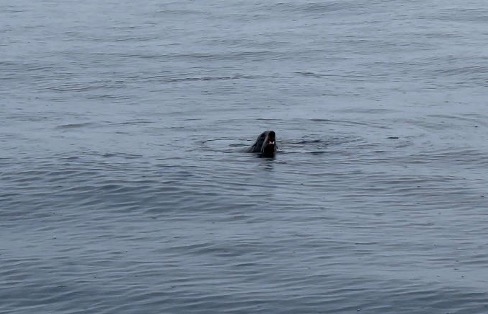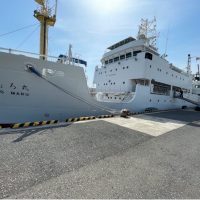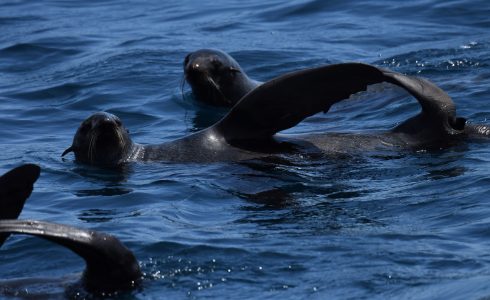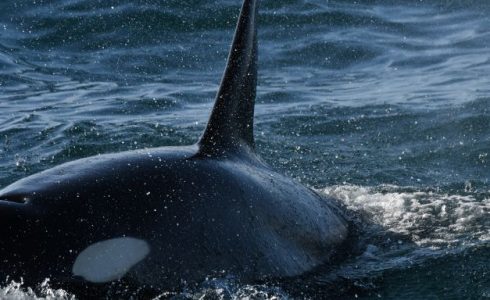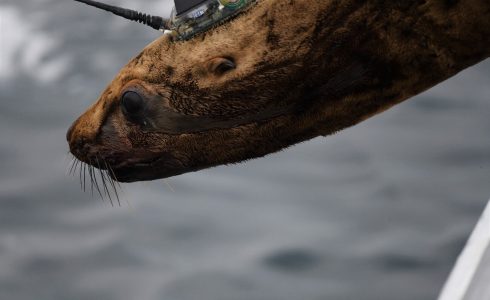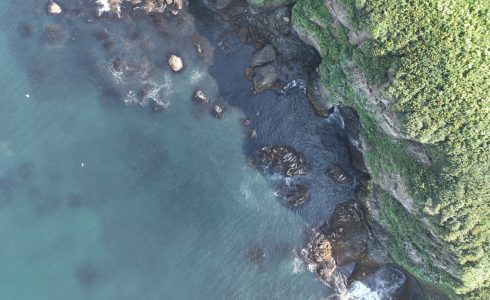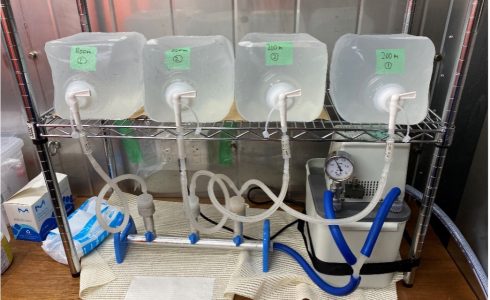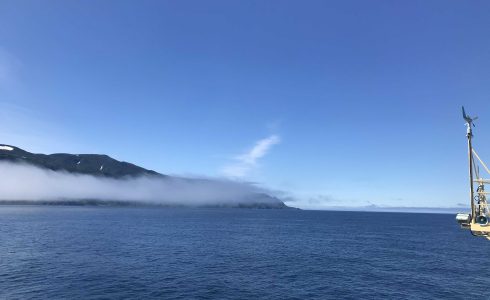D2のLさんが,松前で行ったオットセイ調査について報告してくれました!
ーーーーーーーーーーーーーーーー
We conducted fieldwork off Matsumae in southern Hokkaido to deploy satellite tags on northern fur seals from 27th April to 7th May and from 13th May to 19th May.
The sea conditions were not good during the first half of the fieldwork, and we were only able to conduct the survey twice during the ten days. The strong wind or the high waves hampered us from searching for fur seals at sea. We heard from the fishermen that they had been facing terrible sea conditions since the beginning of April, and their fishery activities were also affected.
Owing to the intensively stronger wind offshore, we did the first sighting survey nearby the coastal area on the 29th April. We sighted numerous Pacific white-sided dolphins, which was consistent with what we heard from the locals. Though we were coming for fur seals, meeting those “extraverted” dolphins and observing them surfing around the fishing boat was exciting. They seemed to enjoy the waves created by the fishing boat, and some swam near the front of the ship (this behavior is also known as bow-rides) while others occasionally jumped out of the waters. We distinguish some mature male individuals from the shape and curvature of their dorsal fins. The first-day survey ended in 3 hours without sighting fur seals but numerous Pacific white-sided dolphins and some Dall’s porpoises in the coastal areas.

Pacific white-sided dolphin, known “Kama-iruka” in Japanese because of their “sickle” shape dorsal fin.
After the joyful time of observing dolphins for the first survey, we could not conduct a survey at the sea owing to the bad sea conditions, which lasted for the whole week. Therefore, we went to the cherry blossom festival in the Matsumae castle out of work hours.

The photo of Matsumae castle.
After seven-days of waiting, we finally went to the sea on 7th May! Mild sea conditions allowed us to go further and search in the offshore areas. Finally! We found two fur seals resting in a “jug-handle” position. After the first observation, we found another male fur seal of a relatively larger size but failed to catch it because of the increasing wave height. It was a pity that we could not deploy a satellite tag on fur seal, but we were happy to confirm that some individuals were still in the southern Sea of Japan.
With the previous sight of three fur seals in the first half of the fieldwork, we were cheered up and looked forward to meeting them again in the second half of our survey. The sea conditions were getting better in the coastal areas, but the winds were so strong that stopped us from getting close to the offshore areas. During the first three-day’s surveys, we only observed Pacific white-sided dolphins and Dall’s porpoises.
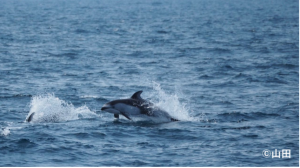
Pacific white-sided dolphin.
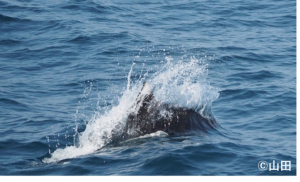
Dalli type of Dall’s porpoise.
With a strong belief in the existence of fur seals, we eventually observed fur seals on the last day of the survey! Before departing from the port, we were told the wave was high in the offshore areas. It was quite wavy at the beginning but gradually got better as time went by. We conducted the sighting survey in the drizzle, not surprised to see the dolphins and misrecognized a wood to be a fur seal. Just a second before losing hope, a black shape appeared in the binoculars, coming down and up from the waters. It turned out to be a northern fur seal! The sea was calm, like a mirror that enabled us to follow the fur seal. However, it seemed to have no interest in the prey just in front of it. We gave up after a three-hour attempt and incidentally sighted another two fur seals while following the first individual.
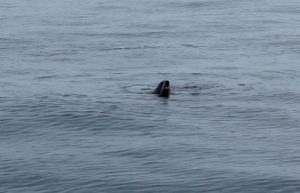
A photo of northern fur seal that we followed for three hours.
This year the capture of the northern fur seal did not go so well, and we were unable to deploy satellite tags on them. Similar to the last year, there were a lot of sardines in the waters off Matsumae, which also troubled the local fishermen (previous fieldwork report: https://hokkaidocean.sakura.ne.jp/2022/05/26/rep-23/). The higher occurrence of Pacific white-sided dolphins is potentially related to the sardines, and we sighted them preying on the sardines at sea.
During the fieldwork, we received a help from previous members of Kaiju-han and students interested in marine mammals. Thank them so much! We are also grateful for the assistance from local institutions and fishermen.
~Afterword~
Delicious food is one of the essential and enjoyable components of fieldwork. Throughout the fieldwork, we sometimes received featured local seafood from the local fishermen and cooked together with the team members. In addition, we really had very joyful time talking with the previous members of Kaiju-han!

Grilled hokke and octopus sashimi.
Reference:
Katsumata, E., Naruse, S., Hosono, T., & Katsumata, H. (2021). SEXUAL DIMORPHISM IN THE DORSAL FIN OF PACIFIC WHITE-SIDED DOLPHINS (LAGENORHYNCHUS OBLIQUIDENS) FROM COASTAL WATERS OFF JAPAN. Cetacean Population Studies, 3, 273-280.

